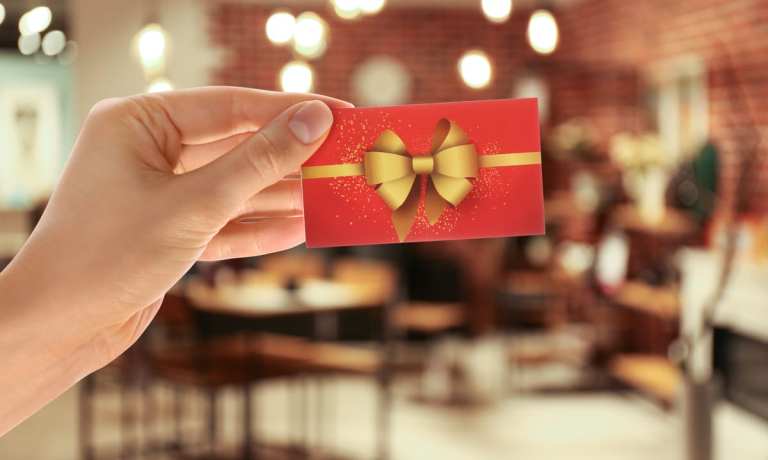Loyalty Rewards Drive Spending For Large QSRs, Independent Restaurants

Sunday (March 14) was “Pi Day,” with the 3/14 date notation representing 3.14, the rounded form of π (pi). Many major pizza restaurant chains took the opportunity to leverage the increased awareness brought on by the holiday to build out their loyalty program base, launching exclusive discounts and promotions only available to members. The focus on increasing membership makes sense — in this month’s Delivering on Restaurant Rewards report, created in partnership with Paytronix, PYMNTS researchers found that 39 percent of restaurant customers are inclined to spend more when restaurants offer loyalty and rewards programs.
 Plus, the rewards offered by these in-app loyalty programs incentivize customers to place mobile orders, which provides further opportunity to drive spending — the report found that almost one in three restaurant customers are motivated to spend more when they can order through a mobile app. Additionally, the report found, placing orders digitally increases monthly spending on food orders 54 percent over orders placed by phone call, $190 versus $123. By offering limited-time-only Pi Day promotions, such as $3.14 for a personal pizza or $3.14 off pizza orders, these restaurant chains can funnel customers into the most profitable ordering channels.
Plus, the rewards offered by these in-app loyalty programs incentivize customers to place mobile orders, which provides further opportunity to drive spending — the report found that almost one in three restaurant customers are motivated to spend more when they can order through a mobile app. Additionally, the report found, placing orders digitally increases monthly spending on food orders 54 percent over orders placed by phone call, $190 versus $123. By offering limited-time-only Pi Day promotions, such as $3.14 for a personal pizza or $3.14 off pizza orders, these restaurant chains can funnel customers into the most profitable ordering channels.
As these pizza chains are pushing their own loyalty programs, financial technology company Rewards Network is taking a broader view of loyalty with its Neighborhood Nosh rewards program, which launched Tuesday (March 9), whereby consumers receive 5 to 10 percent back on every dollar spent at participating restaurants. These restaurants tend to be independent establishments that may not have the funds at their disposal to build their own loyalty apps the way large quick-service restaurant (QSR) chains are able to. By enrolling in the program, they can reap some of the outsized benefits of loyalty offerings available to independent table-service restaurants — 45 percent of customers of these restaurants said they would be encouraged to spend more if they could access loyalty rewards.
 Additionally, the report found, independent table-service restaurants have lost a greater share of their customer base in the pandemic than larger table-service chains. A program like Neighborhood Nosh, which pools rewards for independent restaurants, may give the sector a chance to earn some of their patronage back. However, it remains to be seen whether the economics of the program will work out — Rewards Network does not specify what cut of the profits from these sales it will retain, but as independent restaurants are already struggling with the burden of fees from meal aggregators, it is possible that diverting a percentage of profits to another third-party platform will prove unfeasible.
Additionally, the report found, independent table-service restaurants have lost a greater share of their customer base in the pandemic than larger table-service chains. A program like Neighborhood Nosh, which pools rewards for independent restaurants, may give the sector a chance to earn some of their patronage back. However, it remains to be seen whether the economics of the program will work out — Rewards Network does not specify what cut of the profits from these sales it will retain, but as independent restaurants are already struggling with the burden of fees from meal aggregators, it is possible that diverting a percentage of profits to another third-party platform will prove unfeasible.
While app-building can be expensive and third-party fees can be unworkable, texting might offer a more affordable solution. Matt Baglia, co-founder and CEO of SlickText, suggests, “One of the easiest and most cost-effective ways to digitize loyalty programs is to use SMS marketing … 85 percent of customers prefer receiving text messages over a phone call or email and more than 90 percent of all text messages are read within minutes.” On the consumer side, texting may also offer a more adoptable solution for independent restaurants’ less tech-centric audience. The Delivering on Restaurant Rewards report found that independent restaurant customers were significantly less likely than chain restaurant customers to shift to online ordering during the pandemic, suggesting that a widely understood channel like SMS may be an effective way to engage these tech-resistant customers.
As the report concludes, “Independent restaurants’ customers are more loyal than chain QSRs’ customers, but their engagement is still falling during the pandemic. Independent restaurants must take active measures to mitigate this decrease in customer engagement by adopting the digital ordering options that their customers want.”
Read More On Restaurants:
- Domino’s Loyalty Refresh Doubles Members’ Pickup Orders Amid Consumer Hesitance
- Gen Z Diners Fall Behind Baby Boomers in Restaurant Spending
- Starbucks Launches EV Charging Partnership With Mercedes
- OpenTable and Visa Launch Restaurant Reservation Partnership